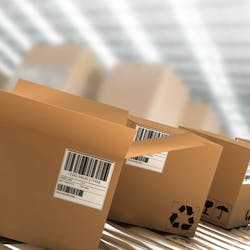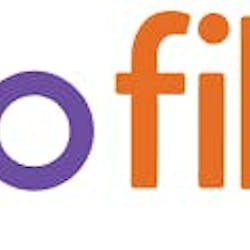What’s the best way for the cable industry to narrow the daunting Digital Divide, in the United States and around the world? The answer is simple: Build more fiber networks.
Of course, as the president and CEO of the Fiber Broadband Association for the past three years and a board member for longer, I may have a bit of a bias here. But I’m not the only one giving this advice. In fact, far from it.
That’s because--also in fact--cable operators large and small are increasingly embracing fiber lines as the primary means of connecting the tens of millions of U.S. households that are unserved or underserved for internet connections. Indeed, fiber is seen around the globe as the single best way to reach hundreds of millions of unserved homes.
It’s in the survey results
Consider the cable providers and other wireline network operators surveyed by Light Reading’s Heavy Reading research unit in a recent study about bridging the Digital Divide. In the study, conducted in Fall 2022, fiber emerged as the overwhelming favorite choice for closing digital divides everywhere.
Specifically, a whopping seven-eighths (87%) of network operators indicated that they plan to use fiber-to-the-premises (FTTP) networks to connect the unserved and underserved parts of their regions. No other option came even close to matching that figure. Fixed wireless access (FWA) technology, which in most cases relies heavily on fiber, came in second, chosen by 40% of survey participants. Cable’s legacy hybrid fiber-coax (HFC) architecture, at 35%, lagged behind in third place.
In addition, the Heavy Reading study asked network operators how much of their regions they aim to blanket with fiber lines. Notably, nearly half (some 48%) of the respondents in the survey sample said they intend to rely on FTTP to reach at least 26% of the unserved households in their areas. Furthermore, more than one-fifth of the respondents (or 22%) plan to leverage fiber for connecting more than half of the unserved homes in their franchise areas.
Thus, the study makes clear that cable and other service providers plan to rely heavily on fiber to construct new broadband networks and extend their existing networks in “network edge-out” builds. Even pure cable operators, who made up 20% of the total survey sample, now appear heavily inclined to deploy FTTP networks in new areas rather than extend their legacy HFC architecture any further.
Why is that?
Of course, there are ample reasons why operators are embracing fiber these days. As I have spelled out in my previous BTR columns, the list of benefits includes faster download and upload speeds, greater network reliability, lower operating expenses, lower latency and jitter levels, less environmental waste and pollution, lower energy usage, greater economic benefits, more positive social impacts, and higher net promoter scores.
And all that aside, because fiber installation costs continue to decline in relation to coax installation costs, it makes financial sense for operators to bring fiber networks endowed with PON technology to regions lacking broadband service.
“It’s a no-brainer to bring fiber to the greenfield areas,” said Stephanie Burris, a product line marketing manager for VIAVI Solutions, speaking during a recent Light Reading digital symposium on closing the Digital Divide. “A PON network is a beautiful, beautiful thing. It is so utterly, utterly reliable.”
It’s certainly a no-brainer in the United States now that the federal and state governments are handing out tens of billions in grant dollars to subsidize new broadband networks in unserved and underserved areas. The roster of major public subsidy programs includes the U.S. Treasury Department’s Capital Projects Fund ($10 billion), the Rural Digital Opportunity Fund (RDOF) program (at least $9.2 billion), and the massive Broadband Equity, Access & Deployment (BEAD) program ($42.45 billion).
Take, for instance, the Treasury Department’s Capital Projects Fund. Under this landmark program, the federal government has already shelled out more than $4 billion in grants to the states to fund new broadband builds, with a very strong emphasis on developing new fiber networks.
“Our rules explicitly put a thumb on the scale in favor of fiber,” said Joseph Wender, director of the Treasury Department’s Capital Projects Fund. Speaking on the same Digital Divide symposium panel as Burris, Wender pointed to the fund’s mandate that all new subsidized networks must support symmetrical speeds of at least 100 Mbps, which only fiber lines can easily support.
“I think Americans expect us to use these dollars in the most efficient way possible, and have the longest impact,” he said. “That’s why we chose 100/100 Mbps knowing full well that that would result primarily in fiber, which would not just support 100/100, it would support speeds wildly higher than that over the course of decades.”
Similarly, the much larger BEAD program clearly favors fiber builds. Although BEAD is technically a tech-neutral program that permits the use of fixed wireless access and other technologies in areas where fiber may be too costly, it essentially sets fiber as the de facto standard for new subsidized broadband networks.
“So, $42 billion is a lot of money,” observed Roger Timmerman, executive director and CEO of Utopia Fiber, speaking during the Digital Divide symposium in February. “It will build a lot of fiber.”
In fact, a recent study by ACA Connects, a trade group that represents small and midsized cable operators and telcos, concluded that the BEAD program alone is big enough to wire the nation with fiber from coast to coast. More specifically, the study asserts that the $42.45 billion in BEAD subsidies, combined with $22 billion in matching funds from participating service providers, will bring fiber to the “vast majority” of unserved and underserved locations.
Thanks in large part to this profusion of new federal subsidy programs, cable operators are busily lining up for grants to reach the tens of millions of unserved households in the nation. And, not surprisingly, operators are seeking to do so by building new FTTP networks in most, if not all, cases.
“Demand for fiber is also being driven by cable operators’ desire for federal broadband funding,” noted the equity analysts at Jefferies Research Services LLC in a recent report about the industry’s network upgrade efforts. “They understand their chances for authorization are much greater when building with FTTP.”
As I noted in my BTR column last month, for instance, Charter Communications, the nation’s second largest cableco, is counting on such public subsidies to pass several million homes with fiber over the next few years. So far, Charter has already deployed fiber to well over 200,000 households.
Similarly, Comcast is looking to tap into BEAD and other public funding pools to boost its reach into adjoining areas with new fiber builds. As part of its overall plant expansion drive, the nation’s largest cable operator extended its reach to 840,000 rural and other locations last year and expects to add at least another 1 million new passings this year, mainly with fiber.
“We will be a participant in those,” declared Comcast President Mike Cavanagh, speaking at the Morgan Stanley Technology, Media & Telecom Conference in March. "We don’t see any reason not to be, but it’s going to be opportunity-by-opportunity, market-by-market.”
Market analysts say other major cablecos are either following suit now or will likely do so soon.
“Of course, early grant authorizations in several states have seen large MSOs take home a strong share of funding – namely Charter and Comcast,” the Jefferies analysts noted in their report. “We understand that Charter and Comcast are utilizing EPON in their fiber builds, often utilizing a Remote OLT (remote optical line terminal).”
The latest broadband equipment shipment figures compiled by The Dell’Oro Group back this up. In its latest quarterly survey about broadband tech equipment, the research firm found that cable operators are increasingly ramping up their FTTP deployments by installing new Remote OLTs (R-OLTs) for fiber lines in their networks.
Indeed, large and midsized North American cablecos installed more than 35,000 R-OLTs last year, Dell’Oro reported. That total, which is easily a record number, was up exponentially from well under 10,000 R-OLT ports deployed in 2021.
Such a development is significant because R-OLTs enable cable operators to create FTTP service groups from the same fiber-optic nodes that they use to serve cable modem subscribers. As a result, operators can manage their new fiber subscribers in the same way that they handle their legacy cable modem subs.
“Cable operators are not sitting idly by,” said Jeff Heynen, vice president of broadband access and home networking at Dell’Oro. Speaking on one of the FBA’s recent “Fiber for Breakfast” podcasts, Heynen noted that operators are responding to heightened competition from all-fiber providers by “making investments in their own fiber infrastructure.”
In yet another sign that cable operators are embracing fiber as the best way to close the Digital Divide, consider the results of a recent survey from the research analysts at Omdia. In their study of 60 cable operators across five regions of the world, conducted in February and early March, an impressive two-thirds (or 67%) of operators said they started offering residential FTTP service over the past three years.
Furthermore, 35% of the operators indicated that they have already deployed PON in some shape or form over their new fiber networks. When asked why, more than half of that sample (or 54%) cited competitive advantage as their top reason for deploying PON, while 27% cited lower operating expenses as the biggest cause.
“I think we can all agree that, whether you [run] an HFC-based network or a PON-based network, the more fiber you can roll out, the lower your operational costs can be,” said Jaimie Lenderman, a principal analyst and research manager at Omdia. Presenting the results at Light Reading’s Cable Next-Gen Technologies & Strategies conference in March, Lenderman also noted that smaller and mid-sized cable operators are embracing fiber builds even more than the biggest cablecos.
“I think you need a lot of fiber to do DOCSIS 4.0 [too],” she said. “So, fiber is not a bad word anymore. They [fiber and DOCSIS] can coexist peacefully and help MSOs move forward.”
Fiber and peaceful coexistence? Sounds good to me.
Gary Bolton is president and CEO of the Fiber Broadband Association.





